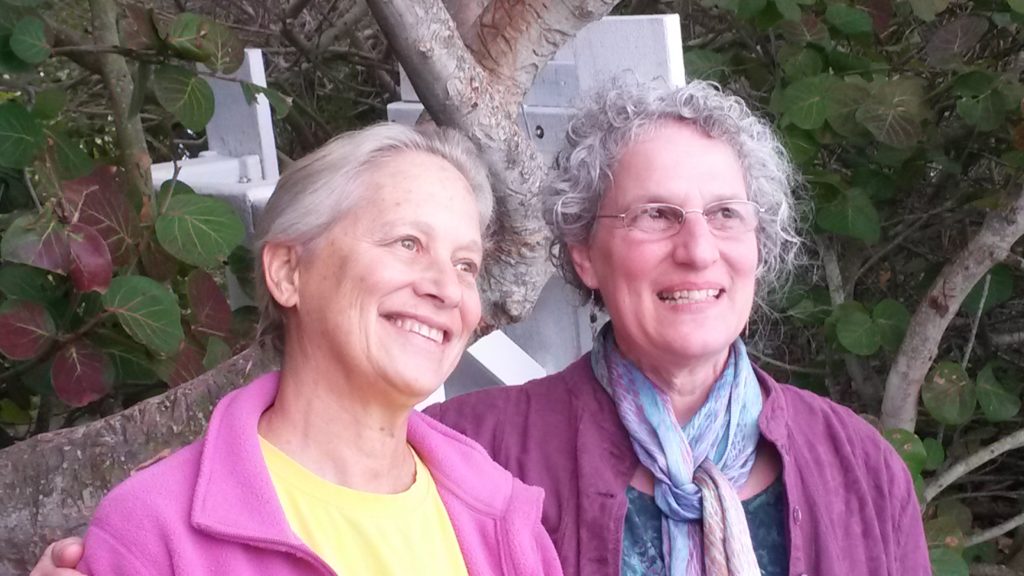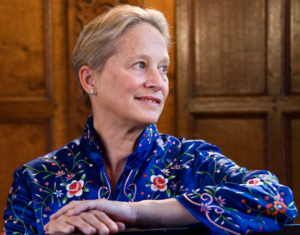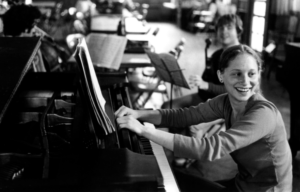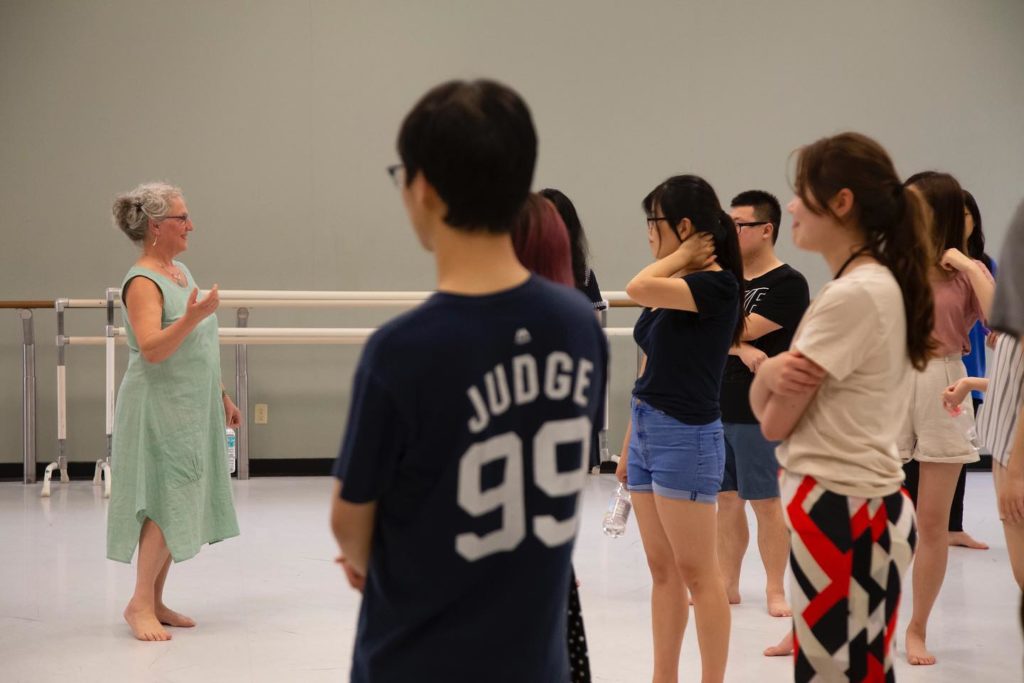
Interview with Rebecca Penneys
Rebecca Penneys is a recitalist, chamber musician, orchestral soloist, educator, and adjudicator.
For over six decades she has been hailed as a pianist of prodigious talent, has concertized
throughout all the continents north of Antarctica, and represented the USA in Information Service
State Department Cultural Tours over a ten-year period. She made her recital debut at age 9 and
performed as soloist with the Los Angeles Philharmonic Orchestra at 11. At 17 she received the
unprecedented Special Critics’ Prize at the VII International Chopin Piano Competition in Warsaw,
an award created in her honor. Other prizes include Nambung Chamber Music Award, on two
separate occasions, Most Outstanding Musician Prize in Vianna Da Motta Competition, and top
prize in Paloma O’Shea Competition. Critics worldwide have acclaimed her live performance and
recordings. She made her NYC Debut at Alice Tully Hall in 1972.
An International Steinway Artist, she has received accolades for her ability to teach Motion and
Emotion, an approach to keyboard technique that helps pianists achieve individual performance
goals without physical strain or injury. In 2021 she was inducted into the Steinway Teachers Hall of
Fame. Having completed 43 years of full-time collegiate teaching, she retired in 2017 and is now
Courtesy-Steinway-Artist-in-Residence at University of South Florida (USF) and Professor Emerita of
Piano at Eastman School of Music. She was Chair of the Chautauqua Institution Piano Program for
34 years and started its chamber music program.
Launched in 2013, the Rebecca Penneys Piano Festival (RPPF), tuition-free for collegiate pianists, is held every summer at USF in July and is supported by Rebecca Penneys Friends of Piano, non-
profit 501c3. Forty students have a semester of lessons with twenty-three eminent artist faculty in just three-week’s time.
Rebecca’s many CD’s, DVD’s, HD performance/teaching videos, and Chicken Soup for Pianists are
available on-line and on all streaming platforms. Current and former students include prizewinners
in international competitions and hold teaching posts worldwide. Rebecca’s teachers include
Aube Tzerko, Leonard Stein, Rosina Lhevinne, Artur Rubinstein, Menahem Pressler, György Sebök,
Janos Starker, and Josef Gingold. Learn more at RebeccaPenneys.com, RPPF, and YouTube “Her
playing is simply revelatory” – American Record Guide

Terry Boyarsky: So, Rebecca, I think we met in 1974.
Rebecca Penneys: Oh my god! Where was that?
TB: I was living in St. Paul. I came up to Milwaukee when you were teaching at the Wisconsin
College Conservatory of Music. . . We go back a long way! I knew that you were a ballerina and
pianist, but I never really found out how you were aware of Dalcroze eurhythmics.
RP: What comes to mind is that Dalcroze was part of the school system (or after-school system). I
was involved with folk dancing and ballet as a very young child. There was also the Kodály method. I
was just part of Dalcroze eurhythmics. I remember going to do that. I didn’t know what it was called
but it was part of my early education. I had a lot of advantage because I did a lot of “alternative”
stuff. Schools weren’t structured like they are now. Lessons weren’t just an hour here or an hour
there. People spent a lot of time with each other. My memory might be different because when
you’re young things seem to take longer.
Music and Movement
TB: Can you talk a little about your piano lessons and becoming a ballerina?
RP: My lessons on piano . . . going to the part that was productive, as opposed to the part that was
abusive . . . Maybe I should tell you the story . . . here I am a 75-year-old woman and I just about 2
weeks ago was able to understand in a positive way what Aube Tzerko [student of Artur Schnabel]
was about. I was finally able to remove and rise above the trauma and scarring connected with his
abusive lessons to me personally, because I was way too young to withstand his yelling and
screaming.
TB: What age are we talking about here?
RP: I don’t know how I was always aware of my body. I don’t remember NOT being aware of my
body. I remember 2 or 3 years old. Maybe it was because my father was very interested in teaching
me about the body and how it worked. The time we spent together was learning about that. I was
double-jointed so I was able to do a lot of things. When I went to my brother’s piano lessons (I was
about 3 1/2) I remember sitting there unable to keep still, and when we got back home, I would run
to the piano and play his music. As a result of that my mother said that I could take piano lessons. I
only had one piano lesson with his teacher because I complained that her thumb was not normal! I
thought that if her thumb wasn’t normal my thumb would become abnormal as well. So, they had to
find another teacher (Victoria Front) who as it turned out, had studied with Bartók. That was
interesting because she played Bartók for me and talked to me about the whole culture and folk
music, which I was already interested in.
When I started to study dance with Carmelita Maracci (who had a huge interest in piano and was a
pianist herself) she had a guy from Mexico who played live and wonderfully well for the classes.
There was this unusual mix.
TB: It’s rare, in my musical experience and movement experience, to find someone like me. My
music world and movement world are the same. That’s why we clicked when I first met you, we had
the same understanding of that music/movement intersection.
RP: What was so unusual about Carmelita Maracci was that she knew the piano repertory better
than I did at that age, and she used to choreograph all those pieces. And she encouraged us to do
our own choreography. She was also an incredible Spanish dancer, so it wasn’t strictly classical, it
was a mix of different modes.
The one thing that was nice about Victoria Front was that she taught me how to read scores. We
used to play 4-hands. She wasn’t rigid technically, so it was about using your body naturally, which I
only realized in retrospect. Later I had a regimented approach from Tzerko which I don’t think was
very helpful – he was more stuck in what to do.
I loved dancing as much as piano, and at that age, I think I liked dancing more and wanted to be a
dancer. That, for a long list of reasons, didn’t work out and it took me a long time to realize I was
better off not becoming a dancer but I feel like a dancer! The comfort at the piano – I had very good
training as a dancer and it was easy for me to translate it into piano because I knew a lot about the
body and it’s what I enjoy doing.
TB: It’s not just that you knew about the body – you were aware of the body in movement.
RP: That’s thanks to a number of influences coming together. I think it’s also a knack – when you see
little kids, or teach any age, there are people that have the ability to reach inside themselves and
feel themselves on the inside and outside. As a teacher, my job has always been to help somebody
reach in and move stuff around as needed.

Piano Technique: Work vs. Play
TB: You’re somewhat of a specialist in playing without strain or pain. Did you have your own strain
and pain that you had to work through?
RP: I had normal strain and pain when I danced, but there’s no dancer who doesn’t. When I started
to play things like Chopin études and Liszt sonatas I didn’t know how to distribute and proportion
muscle use and I developed strain and stress. You want to have the maximum effect with minimum
effort, and I wasn’t able to find the balance while I was studying with Tzerko. It was a crazy situation,
even though what came through was the quality of sound, which was beautiful.
It became clear to me that I wasn’t going to be able to do anything seriously with the piano unless I
could figure out a way of playing without pain or threat of injury to myself. That’s how I got on this
path. I started to translate the feelings of the dance in to the piano, using a lot of principles from
swimming and everything else I did that was pain free.
TB: This is so interesting – because one of the major tenets in the Dalcroze eurhythmics world (and
Jaques-Dalcroze himself stressed it) is that there has to be joy first. Learning comes in a state of joy.
RP: One of the things that you and I always thought was just ridiculous is that when dancers go to
dance class, they go to dance. They don’t go to “work.” When pianists sit down at the piano, most
don’t go to play, they go to work. “You have to do the work.” That has always rubbed me the wrong
way because you don’t use work muscles when you play the piano, you use play muscles. They are
all muscles of course – and there is so much emotion involved in pain. There’s a big area of flexibility
about how you get yourself out of pain and how to make more fluidity in your body. Fluidity and
motion, without getting stiff, it’s like doing yoga – it feels good! Now it’s prevalent to say, “you’ve got to keep moving” (after RP trying to heal a cracked rib) but that’s not the same as dancing in joy. If
you feel like you’re dancing when you’re walking, you’re going to feel a lot better.
One of the professors at Rebecca Penneys Piano Festival (RPPF) was asked, “How do you inspire
yourself on a daily basis.” Everyone was talking about interesting aspects. One person said, “I know
in my heart that it doesn’t matter what I feel, you just have to sit down at the instrument and do the
work. You have to put in all these hours.” For me, it’s deadening to do that. I’m the opposite because
if you’re “working” – if that’s your mindset – you’re not getting anything done.
TB: When I sit down at the piano to discover something, play around, or see what happens today . . .
RP: Well, I don’t try anything. I just sit down, and I go on a trip. I don’t know where I’m going exactly
because you don’t know. That’s the window I try to open for anybody I teach, because once that’s
open their imagination can come out. It’s a process, but it’s not like a job – good job!
Rebecca Penneys Piano Festival
TB: Let’s take a moment to say something about Rebecca Penneys Piano Festival.
RP: One of the things we do is stress wellness and wholeness, we have Dalcroze with Terry, we have
yoga, we go to the museum, we do attention/memory training with Ray Gottlieb (we call it “stress
management”). All of these exercises – like “chopsticks fusion” (a very popular exercise because
everybody knows how to use chopsticks) – you can use chopsticks to improve your vision because
you practice diversion and conversion. That’s something – the kids walk around with their
chopsticks. We do all this alternative stuff that you can’t do in university.

TB: When I first came to RPPF I found the students so delightfully open and willing – and I’m very
playful in my classes. They are full of giggles and wonder about what we try. I think that’s the whole
atmosphere of the festival.
RP: We have a new “Dream Scape” weekend this year, which is three pianist-composers. One is a
Navaho composer who uses his grandfather’s native songs in his compositions. Another gal is
Brazilian and she’s really into salsa and Brazilian jazz, so she combines that, she was always a great
improvisor. There’s this idea that everybody has an inner voice, and everybody has dreams. So,
what are we going to do – just keep the lid on them and not open the jar? So, in this Dream Scape
weekend they’ll interact with them, learn some new pieces. Ken Frazelle is also coming; he writes
pieces that are descriptive of the Blue Ridge Mountains. Beautiful stuff. I’m not quite sure what will
happen but it’s another way of opening up ideas for them, validating their own ideas, and helping
them know that they can make any path they want.
Dalcroze-related Piano Pedagogy
TB: I’ve been coming to your master classes for years and also used to come to more of your
performances. You are so present in responding to the student – what that student is missing or
needing or even the emotional state of the student. I have heard you say to a student, for example,
“here’s this Chopin that starts with one note, how would you harmonize it?” They are stuck. Or you
ask, “how would you make a different ending to that phrase?” You’re trying to push them to think
more like a composer and also like an improvisor. I love that about your teaching.
RP: It’s also that I want them to experience music with their body (describes video clip where a
student hops to indicate staccato and walks to represent legato). It’s important to give them a big
physical message as well as an aural message. The problem with teaching the piano in my opinion – why it’s so difficult – is because the motions are so small. That’s the value to me of doing
eurhythmics, dancing of any kind, ballroom dancing. You can’t play a waltz unless you know how to
do a waltz. There’s no way to imagine the feeling without actually dragging your body onto the
ballroom floor and dancing. The more I live, the more I know this is true.
Dalcroze is a fantastic way of combining all this. I had wanted to get somebody to teach the actual
steps of Baroque dance, even though a lot of Baroque music isn’t meant to be danced to. It’s hard
to find someone to do that.

I used to use the (exercise) ball a lot. Bouncing on a ball instead of sitting on a static chair while
playing piano makes everybody feel rhythm with their whole body. You sit on the ball at the piano
and bounce. You can feel strong and weak beats. It’s like using trampoline – rhythm problems
straighten out immediately. Eastman students didn’t need it much but the little kids at Chautauqua
needed it. It depends.
One thing I can say over the last 50 years is the ability of students to excel and accelerate quickly.
It’s gone through the roof. If you listen to 10- or 12-year-olds play, these kids are SO developed you
just wonder what they are going to do. It’s astounding. It’s a combination of the Chinese parents
pushing the kids who are not in regular schools, and the sense of discipline that the whole family
has. The level is higher and higher.
TB: I taught Dalcroze eurhythmics master classes to graduate students in Thailand, and I was
warned that the Thai system was very rigid. The professor spouts information and the students
memorize everything. So, when I asked them to be playful and improvise a small little thing – like,
“here are 4 beats, can you put 2 eighth notes anywhere in your 4-beat measure?” they were
petrified and stuck, even though I had good translators.
RP: They didn’t feel like they had the flexibility to make a choice.
Individuality, Imagination, Improvisation
TB: You’ve heard me say in my Dalcroze classes, “you must find your own voice.” We do a lot of
solfège and singing games to counteract all those hours at the piano. Could you speak a little about
how someone who is so facile, so technically proficient, can find their own individuality.

RP: Sometimes they can and sometimes they can’t. I think that if the brainwashing of “there’s only
one right way” is in there from the age of 2 or 3, it doesn’t always break through. They can’t switch to
another track. So, your whole teaching is about trying to do that. It’s interesting to look at these
students when they are studying with you; they sound like they have their own voice but that can be
deceptive because it’s really partly your voice that they’re using, not their own.
That’s what’s so interesting about the Dream Scape weekend. These are two people who broke
through their own issues which were severe issues from their respective families. Everybody has
stuff they have to work out; I’m not sure if they will be willing to talk about their backgrounds
because it’s painful to bring up your own junk and how your work through it.
I have lessons with students where we practice imaginative thinking – imagine the piece this way,
that way – and the assignment is to come back with two distinct interpretations. Usually, they’re not
two interpretations. It usually shrinks to almost nothing – maybe a little louder here, a little softer there – but they are not used to exploring that idea. I was reading recently about the College of
Magic. I think it’s an interesting approach. It is a kind of magic, and to consciously create that . . .
It would be interesting if the kids doing Dalcroze could create an exercise. You could give them x, y,
and z and say, “next class we’ll see what you come up with!”
I have a student who I’ve been teaching, trying to get his imagination working. He looked at me the
other day and said, “okay, so what were the two ways that I could do this?” and I said, “I’m not
telling you because there are many more than two ways; you’re going to have to figure it out.”
TB: I have seen you demonstrate the same phrase of music (same notes) three of four different
ways in the same session, and it is truly as if a different person is playing that phrase.
RP: I’m not sure where that comes from. It’s a gift. Having imagination is part of talent. It’s like a
knack. It doesn’t matter whether at the piano or I’m in the garden, I have that gift. You can ask Ray –
anything I cook is always different and it gets better and better just because I can improvise. I don’t
feel comfortable inside myself without improvising.
TB: It’s something about being true to who you really are.
RP: Everybody has this; human beings do improvise! That channel has not been cultivated. I
remember when I was in school – maybe kindergarten – I was drawing a picture of the city. In my
picture the sand was over here, the palm trees were blue, the sky was green, and some other colors
there weren’t exactly kosher. The teacher started to berate me, and I remember looking at her,
thinking to myself, “you don’t have any imagination.” I never said anything about it but always kept it
in my heart – wow, what a way not to be, I mean, to be so rigid in yourself, not to be able to move
things around. When you practice it’s solving problems, like playing tricks with yourself to get
yourself to do this or that. It’s fun!
TB: From all that difficult time from Aube Tzerko to where you are now, how did you break through to
this moment of “it’s fun!”
RP: I think that having dance there was very helpful because it was always in the “fun” category for
me. I was dancing up until the time I was 22 or 23 so I had that outlet. Studying composition with
Leonard Stein was also wonderful – that was a fun time. I was supposed to do this or that for my
lessons but if I couldn’t do it because I had too much other work, he would say, “Oh, that’s no
problem, let’s do THIS today!” which was like going into his magic box today. That was helpful in
overcoming the trauma.
I think that the scars from Tzerko impacted me in a huge way. You’d come in having worked all week – the worst memory was the Schumann Carnival which I had to perform in concert in a few days,
and he completely tore that interpretation around and built another interpretation. Now, the pain of
that was so severe. How can you possibly change an interpretation? You never know what will
happen in concert. Eventually, I was able to see that was his way of keeping things fresh – never play
it the same way twice. But there could have been a much nicer way of doing that without yelling and
screaming and hitting and tears all the time, and you should give up the piano, and all of that stuff.
I think that I did learn that from him but was not able to extract that from his totally abusive and out-
of-whack personality. When I went to Rosina Lhévinne that one summer and heard her beautiful sound and watched [Artur] Rubenstein, I had all these other injections. By the time I got to
Bloomington, after having given up the piano for 2 1/2 years, being in the San Francisco ballet
company, I knew that György Sebők was a natural player because I had heard him, he was like a
healer for me. It couldn’t have been better for me, and [Janos] Starker the same way. So, I was able
to go on from that moment. When you have a severe trauma, it doesn’t go away, the trauma just sits
there. You have to do a lot of work. I’m happy that I was able to resolve all that early trauma even
now as an old person because I feel better. I don’t have that junk hanging on. Everyone’s journey is
different; I thought one of the things that I would do as a project is talk and show the things that I
learned from Carmelita Maracci. I can demonstrate a lot of those movements even at the piano –
what I leaned from Tzerko, what I learned from Sebők, what I learned Rubenstein, and on and on.
They were all interesting people and had their own battles. Some people went further than others.
We’re all on our own journeys, then we all get off the bus, and nobody knows when that’s going to
be.
St. Pete Beach, Florida – February 12, 2023
The DSA reflects the richness and diversity of the American community of practice, which includes Dalcroze-inspired teachers & artists, musicians & dancers, and actors & other professionals who have adapted the Dalcroze approach to their individual work. Let us know what Dalcroze means to you. Not a member? Join instantly online.